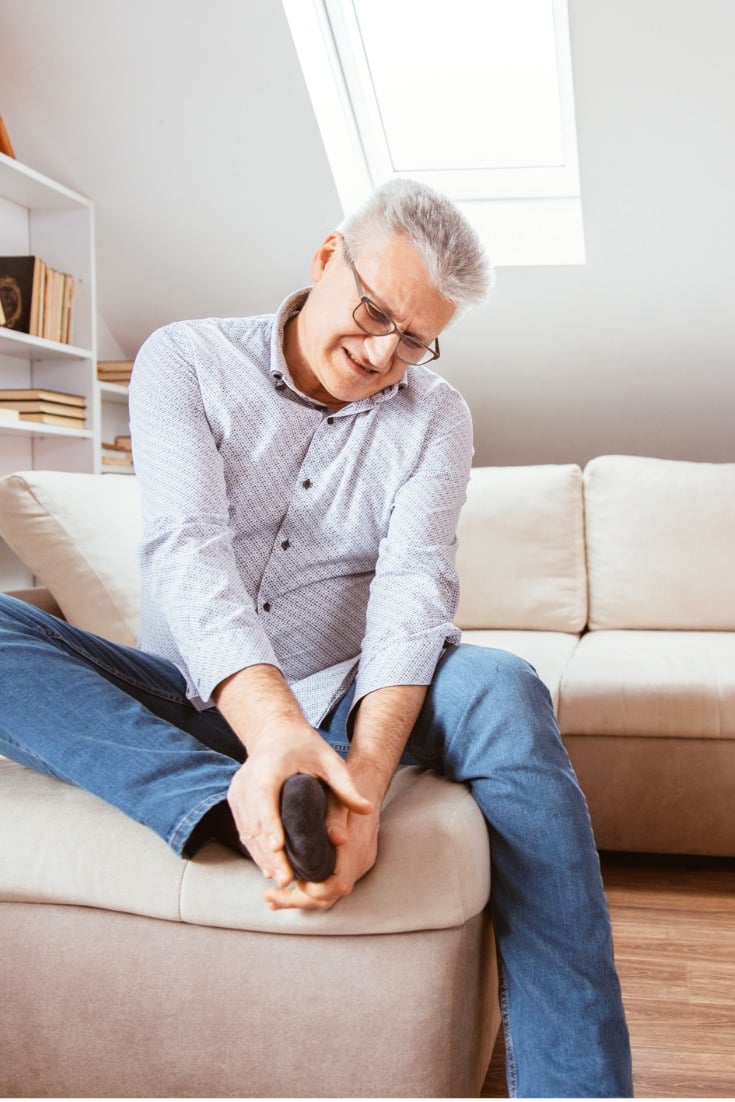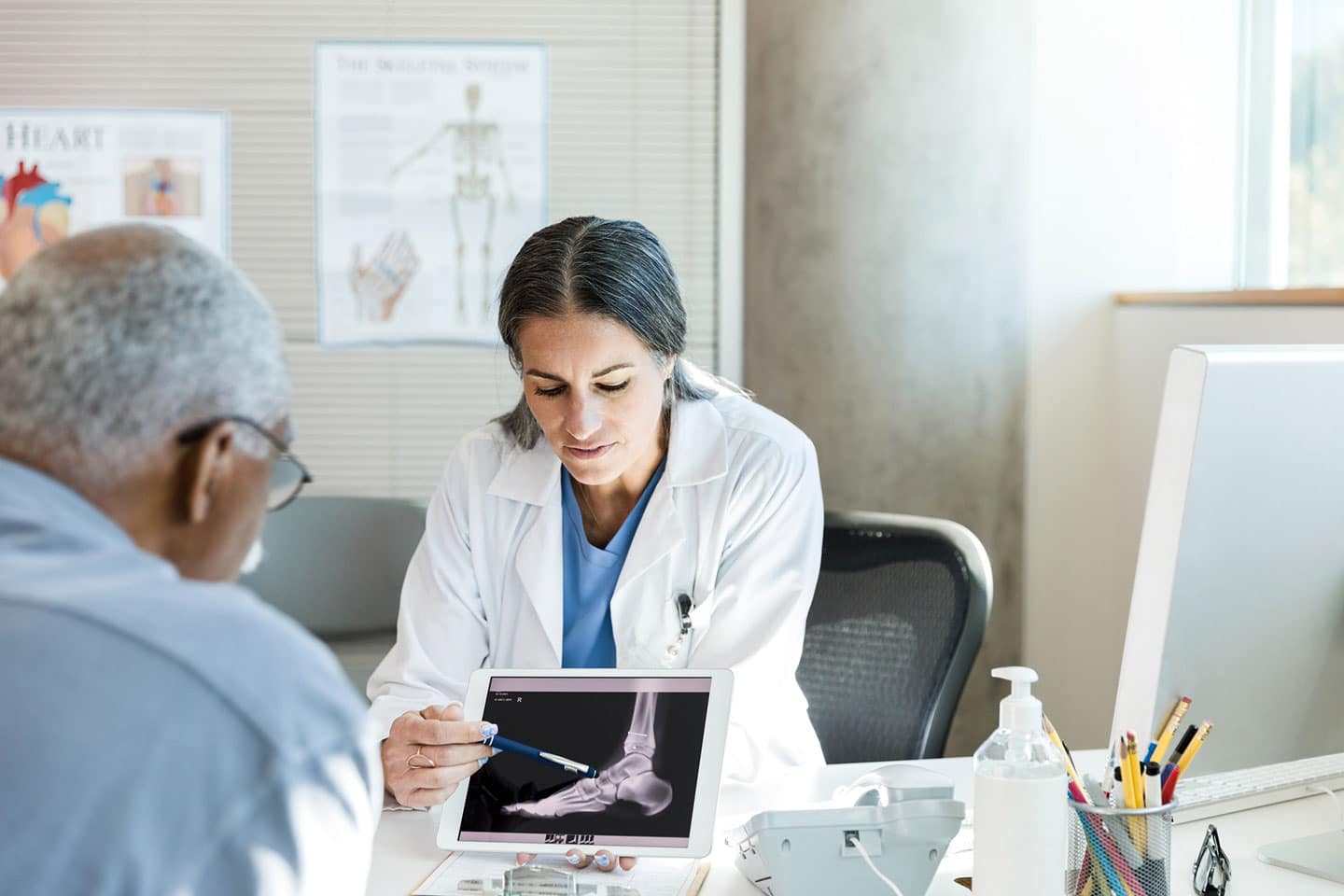Treatment for Foot Pain and Disorders
Orthopedic foot pain can impact every aspect of your life, from walking and standing to exercising and working. At times, the pain can be so severe that it can prevent you from carrying out daily activities and participating in the things you love. If you’re experiencing foot pain, you’re not alone – millions of people around the world are affected by this condition. However, the good news is that with the right treatment and care, you can get back to a pain-free life.
What is Foot Pain?
Foot pain is a common complaint among people of all ages. It can be caused by injuries, medical conditions, or everyday activities like walking or jogging. Foot pain can range from mild to severe and may involve swelling, redness, tenderness, stiffness, or throbbing sensations. Treatment for foot pain depends on the underlying cause.
Common Foot Pain Causes that Orthopedic Doctors Treat
Orthopedic doctors are specialized physicians who diagnose and treat conditions related to the musculoskeletal system, including the bones, joints, muscles, ligaments, and tendons of the foot.
Some of the common foot pain causes that orthopedic doctors treat include:
- Foot Injuries: Trauma to the foot can cause dislocation and fractures, leading to pain and swelling. Strains and sprains caused by overuse of the foot or an injury can also result in pain and inflammation.
- Arthritis: Arthritis can affect the joints in your foot, causing pain, stiffness, and difficulty moving. Osteoarthritis, rheumatoid arthritis, and gout are some of the types of arthritis that can affect the foot.
- Tendinitis: Tendinitis is the inflammation of a tendon, leading to pain and weakness. Achilles tendonitis and posterior tibial tendonitis are some of the common types of tendinitis that can affect the foot.
- Plantar Fasciitis: Plantar fasciitis is the inflammation of the plantar fascia, a thick band of tissue that connects your heel bone to your toes. It is a common cause of heel pain.
- Bursitis: Bursitis occurs when the bursae, small fluid-filled sacs that cushion your joints, become inflamed, leading to pain and stiffness. Retrocalcaneal bursitis and metatarsal bursitis are some of the types of bursitis that can affect the foot.
- Nerve Problems: Nerve damage or impingement in the foot can lead to pain, numbness, and tingling sensations. Peripheral neuropathy, Morton’s neuroma, and tarsal tunnel syndrome are some of the common nerve problems that can affect the foot.
- Structural Problems: Structural problems, such as flat feet, high arches, and hammertoes, can cause foot pain. These conditions can affect how your foot functions, leading to pain and discomfort.
Diagnosing Foot Pain and Disorders
Orthopedic specialists diagnose foot pain through a combination of physical examinations, medical history, and imaging tests. The e steps an orthopedic doctor may take to diagnose foot pain include:
- Medical History: The orthopedic doctor will start by asking about the patient’s medical history, including any previous foot injuries, surgeries, or medical conditions that may be contributing to the pain. They will also ask about the duration, intensity, and location of the pain.
- Physical Examination: The orthopedic doctor will perform a physical examination of the foot to evaluate the range of motion, strength, and stability of the foot and ankle. They will also look for any signs of inflammation, swelling, or deformity.
- Imaging Tests: Imaging tests, such as X-rays, MRI, CT scans, or ultrasounds, may be ordered to get a better view of the bones, joints, and soft tissues in the foot. These tests can help the orthopedic doctor to diagnose fractures, dislocations, ligament tears, or other abnormalities that may be causing foot pain.
- Diagnostic Injections: The orthopedic doctor may use a diagnostic injection to confirm the source of foot pain. A small amount of anesthetic or anti-inflammatory medication is injected into the affected area, and if the pain goes away, it confirms the source of the pain.
- Laboratory Tests: Blood tests or other laboratory tests may be ordered to diagnose underlying medical conditions that may be causing foot pain.

How do Orthopedic Doctors Treat Foot Pain?
Orthopedic doctors treat foot pain through a variety of methods, including conservative treatments and surgical interventions. The treatment approach used by an orthopedic doctor will depend on the underlying cause of the foot pain and the severity of the condition.

Conservative Treatments
Conservative treatments are non-invasive methods used to relieve foot pain. These may include rest, ice, compressions, elevation (RICE), physical therapy, orthotics, or medications, such as nonsteroidal anti-inflammatory drugs (NSAIDs) or corticosteroids. These treatments may be used to manage conditions such as plantar fasciitis, tendinitis, and bursitis.
Injection Therapy
Injection therapy involves the use of injections of corticosteroids or other medications to relieve pain and inflammation in the foot. Orthopedic doctors may use this approach to treat conditions such as plantar fasciitis, tendinitis, and bursitis.
Foot Surgery
In some cases, foot pain may require surgical intervention. Orthopedic doctors may recommend surgery to repair fractures, dislocations, ligament or tendon tears, or other structural abnormalities. Common surgical procedures for foot pain include arthroscopy, fusion, joint replacement, and osteotomy.
Physical Therapy
Physical therapy is often recommended as part of a comprehensive treatment plan for foot pain. Physical therapy can help to improve strength, flexibility, and range of motion in the foot and ankle, which can reduce pain and prevent further injury.
Orthotics
Orthotics are custom-made shoe inserts that are designed to support the foot and provide relief from foot pain. Orthopedic doctors may recommend orthotics for conditions such as plantar fasciitis, flat feet, and high arches.
Activity Modification
Orthopedic doctors may recommend activity modification to help reduce foot pain. This may involve avoiding activities that exacerbate the pain, modifying footwear or using supportive devices, or engaging in low-impact activities such as swimming or cycling.
Foot Pain Orthodontic Treatment at Cameron Hospital
If you’re suffering from foot pain, don’t let it continue to disrupt your life. At Cameron Hospital, we offer orthodontic treatments specifically designed to alleviate foot pain and improve your overall quality of life. With our expert team of orthodontists and state-of-the-art technology, we can help you achieve lasting relief from your foot pain. Take the first step towards a pain-free future and schedule your consultation today.

©2025 Cameron Memorial Community Hospital
416 E. Maumee Street, Angola, IN 46703
